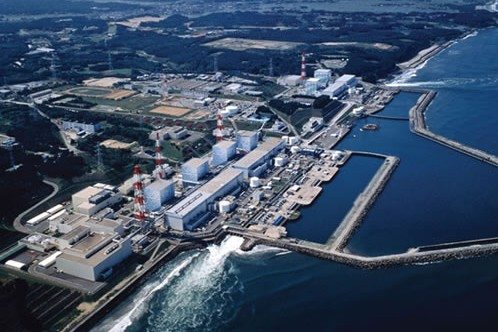An explosion rocked an earthquake-hit nuclear plant Monday, as Japan struggled to avert a catastrophic reactor meltdown caused by a quake and tsunami feared to have killed more than 10,000.
A new tsunami scare triggered evacuations on the devastated northeast coast after a large wave was spotted rolling in to shore, but authorities said they had detected no sign of a tsunami or a quake that would have caused it.
Japan has been battling to control two overheating reactors at the ageing Fukushima plant after the cooling systems were knocked out by Friday’s 8.9-magnitude quake and the resulting tsunami that swallowed up whole towns.
Shortly after Prime Minister Naoto Kan said the plant was still in an “alarming” state, a blast at its number-three reactor shook the facility and sent plumes of smoke billowing into the sky.
The plant’s operator TEPCO said that nine people were injured in the blast, which authorities said was probably a hydrogen explosion.
The chief government spokesman Yukio Edano said TEPCO reported that the reactor was probably undamaged and there was a low possibility of a major radiation leak at the plant, 250 kilometres (160 miles) northeast of Tokyo.
Another explosion blew apart the building surrounding the plant’s number-one reactor on Saturday but the seal around the reactor itself remained intact.
With ports, airports, highways and manufacturing plants shut down, the government has predicted “considerable impact on a wide range of our country’s economic activities”.
Tokyo’s stock market plunged more than six percent in afternoon trade as investors absorbed the impact, including power outages and plant shutdowns, after the biggest quake in Japan’s history.
The yen surged to a four-month high after the central bank pumped a record amount of money into financial markets while shares in auto makers were hammered more than 10 percent after they were forced to close factories.
Leading risk analysis firm AIR Worldwide said the quake alone would exact an economic toll estimated at between $14.5 billion and $34.6 billion (10 billion to 25 billion euros), without taking into account the effects of the tsunami.
Kan said in a televised national address Sunday that Japan was facing its worst crisis since the end of World War II — which left the defeated country in ruins.
“The current situation of the earthquake, tsunami and the nuclear plants is in a way the most severe crisis in the 65 years since World War II,” said the premier, who was dressed in an emergency services suit.
The large wave off Japan’s coast which triggered panic Monday had been spotted by a helicopter.
Authorities issued evacuation orders in some parts of the devastated coastline after the initial report and as seawater was seen retreating off Iwate and Aomori prefectures — a phenomenon that occurs before tsunamis.
“When we detect an earthquake, the agency issues either a tsunami warning or an alert, but there was no quake monitored,” a meteorological agency official told AFP.
Rolling power outages were due to start later Monday. Millions of people have already been without electricity since the disaster hit Friday, forcing the shutdown of nuclear plants in the affected areas.
Japan relies on nuclear energy for about a third of its power needs.
Edano said Sunday it was likely a partial meltdown had occurred at the Fukushima number-one reactor. A meltdown occurs when a reactor core overheats and causes damage to the facility, potentially unleashing radiation into the environment.
France’s Institute of Radiation Protection and Nuclear Safety said “very large” amounts of radioactivity were “produced simultaneously with the explosion” at Fukushima Saturday.
The United Nations said a total of 590,000 people had been evacuated in the quake and tsunami disaster, including 210,000 living near the two Fukushima nuclear plants.
The colossal 8.9 magnitude tremor sent waves of churning mud and debris racing over towns and farmland in Japan’s northeast, destroying everything in its path and reducing swathes of countryside to a swampy wasteland.
The police chief in badly hit Miyagi prefecture said the death toll was certain to exceed 10,000 in his region.
In the Miyagi port town of Minamisanriku alone some 10,000 people were unaccounted for — more than half the population.
The national police agency said the confirmed death toll now stood at 1,597, but groups of hundreds of bodies were being found along the shattered coastline.
Many survivors were left without water, electricity, fuel or enough food, as authorities appeared overwhelmed by the monumental scale of the disaster.
Japan committed 100,000 troops — about 40 percent of its armed forces — to help earthquake and tsunami survivors as the world rallied behind the disaster-stricken nation and a US aircraft carrier began ferrying in food.
Japan sits on the “Pacific Ring of Fire”, and Tokyo is in one of its most dangerous areas, where three continental plates are slowly grinding against each other, building up enormous seismic pressure.
The immense force of Friday’s quake has moved Honshu — the main Japanese island — by 2.4 metres (eight feet), the US Geological Survey said.










